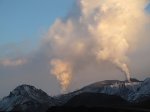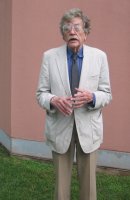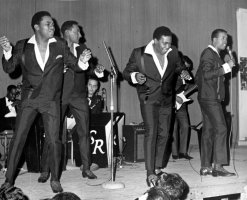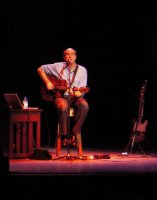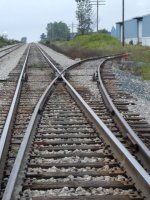Online Magazine
Recent Posts
- Safeguard your Cellphone Photos
- Black & White to Color – Instantly
- Wearing Many Hats
- Video Roundup
- Rescuing Your Blurry Pictures
- Showing Their Age
- What is Your Angle?
- Panorama Photos
- Humorous Photos
- Close Ups
- Fisheye Pictures
- Photo Antiquities
- Printing Big
- Appreciating Scale
- Celebrity Sightings
Tags
More Places to Go
- Free "How-To" Books “How To” books for popular cameras 0
- Vist Us on Facebook keep in touch with us on Facebook 2
Archives
- July 2023 (1)
- March 2023 (2)
- February 2023 (1)
- December 2022 (1)
- October 2022 (1)
- September 2022 (8)
- August 2022 (9)
- July 2022 (1)
- June 2022 (1)
- June 2021 (1)
- May 2021 (1)
- March 2021 (5)
- February 2021 (4)
- January 2021 (2)
- April 2019 (1)
- March 2019 (1)
- February 2019 (1)
- October 2018 (2)
- April 2018 (1)
- March 2018 (4)
- February 2018 (1)
- November 2017 (1)
- August 2017 (1)
- June 2017 (1)
- April 2017 (1)
- March 2017 (5)
- February 2017 (2)
- January 2017 (1)
- October 2016 (1)
- September 2016 (1)
- August 2016 (1)
- July 2016 (1)
- May 2016 (1)
- April 2016 (1)
- March 2016 (2)
- February 2016 (1)
- January 2016 (2)
- December 2015 (1)
- November 2015 (1)
- October 2015 (3)
- April 2015 (1)
- March 2015 (5)
- February 2015 (1)
- January 2015 (4)
- December 2014 (2)
- November 2014 (5)
- October 2014 (2)
- September 2014 (1)
- August 2014 (2)
- July 2014 (1)
- May 2014 (1)
- April 2014 (5)
- March 2014 (5)
- December 2013 (2)
- November 2013 (18)
- October 2013 (1)
- September 2013 (1)
- August 2013 (1)
- July 2013 (1)
- June 2013 (3)
- May 2013 (1)
- April 2013 (2)
- March 2013 (1)
- February 2013 (1)
- January 2013 (1)
- December 2012 (1)
- November 2012 (2)
- October 2012 (2)
- September 2012 (5)
- August 2012 (2)
- July 2012 (1)
- June 2012 (1)
- May 2012 (1)
- April 2012 (4)
- March 2012 (1)
- February 2012 (1)
- January 2012 (3)
- December 2011 (1)
- November 2011 (3)
- October 2011 (1)
- September 2011 (2)
- August 2011 (2)
- June 2011 (3)
- May 2011 (4)
- April 2011 (8)
- March 2011 (8)
- February 2011 (10)
- January 2011 (6)
- December 2010 (11)
- November 2010 (14)
- October 2010 (6)
- September 2010 (12)
- August 2010 (2)
- July 2010 (4)
- June 2010 (3)
- May 2010 (1)
- April 2010 (1)
- March 2010 (2)
- February 2010 (1)
- January 2010 (1)
- December 2009 (1)
- November 2009 (2)
- October 2009 (2)
- September 2009 (1)
- August 2009 (3)
- July 2009 (2)
- June 2009 (1)
- May 2009 (2)
- April 2009 (1)
- March 2009 (2)
- February 2009 (1)
- January 2009 (3)
Earth Day 2010 – looking backward and forward and upward
21st April 2010
|
Earth Day 2010
… 40 years and still counting Note: This recently updated article was adapted from an article written for Earth Day 2007.
April 21, 2010
On a daily basis owing to my job, my thoughts are usually centered on the topic of photography, aviation and airplanes. But recently, a few things happened to jog my memory and I was carried back to the first Earth Day of 1970. Stick with me. I’ll get the other parts soon enough. From the time I first started reading his compelling and humorous books, novelist Kurt Vonnegut has been one on my favorite authors. He died in April 2007 shortly before the original version of this article was published. With his passing I made it a point to listen to my favorite NRP radio station and to read the newspaper articles about one of America’s funniest writers of the 20th century. I also made my way over to the local bookstore to buy a few Vonnegut books so as to refresh my slowly failing memory with a few of his lesser known works. The news coverage of his life and death had my mind wandering back to the late 60’s and early 70’s when I was a student at the University of Michigan (U of M) in the small city of Ann Arbor. Somewhere in that time frame, Vonnegut was asked to be “Writer in Residence” at the University. As one of the most widely read authors of the 1960’s generation, he was sure to have a large, welcoming audience among would-be writers studying at the U of M. He sometimes frequented a small, local campus restaurant called “The Brown Jug” where he’d have breakfast and smoke lots of cigarettes. It was popular lore that he claimed smoking to be the slowest form of suicide. My wife Kris, then a student and part-time waitress, was also a Vonnegut reader. On occasion, she would wait on him in the restaurant. She admitted, that owing to her hearing difficulty, she was not a very good waitress and therefore frustrated the celebrated writer with her (lack of) service. More to the point, his purpose on campus as writer in residence ended when he left prematurely declaring something to the effect: “I’m leaving Ann Arbor since I have nothing much to teach you about writing.” So it goes.
To put things in the proper perspective, 1970 was a very vibrant, exciting and yet conflicted era. I’m reminded of Charles Dicken’s quotation in my high school year book which aptly describes the period: “it was the best of times and it was the worst of times….we were all going direct to heaven, we were all going direct the other way”. This was the period of Viet Nam and Kent State, living off the earth and making peace, hippies and long hair. We were contemporaries of heavy metal, Motown, James Taylor, Woodstock and The Beatles music. With this as a backdrop, we happen upon the Earth Day 1970 teach-in at the U of M. Not long after Vonnegut’s departure from the campus, we were treated to a free music concert. The popular folk song artist Gordon Lightfoot came to town to perform for more than 12,000 screaming students in one of the large stadiums at the University. Gord had had been drawing large audiences around the US, Canada and Europe with his classic Canadian Railroad Trilogy (click for lyrics), a poetic ballad describing the building of the railroads across Canada and the difficult tradeoffs between developing the economy and keeping the land pristine for the future. His music was great back then and to this day, I remain a Lightfoot fan. I was so much the fan that two years ago I traveled to Las Vegas (by myself since no family member wanted to accompany me) to hear him in concert at the Orleans Casino. And I ended up staying for two of his performances. Would you believe that I even have a life size poster of Gord which I gifted to myself courtesy of the advertising manager at the Orleans? Anyway, traveling back to 1970, we understood that Lightfoot’s appearance was part of what was to be part of the first Earth Day teach-in, a gathering of some 50,000 in Ann Arbor to discuss, educate and find solutions to environmental problems created by the earth’s inhabitants. From all of the excitement and the energy which went into the production of the first Earth Day teach-ins, many of us believed that we were on the verge of saving the environment. As an economics student, I was counting on a future career that would revolve around conservation, ecology and recycling. At the time, I was deeply serious about this course of study. I studied writings from the likes of educators and humanists Kenneth Boulding, Buckminster Fuller and E.F. Schumacher and took courses such as remote sensing of the environment and cost-benefit analysis. My great enthusiasm for all things environmental waned some time after graduating with a degree in Natural Resource Economics. It was fully a year later that I was still trying to find a job in this nascient field. Instead, I ended up in the computer business. So it goes. As I usually stay away from public discussions about politics, I won’t comment on how well or how poorly the earth’s inhabitants have done to improve the environment over the past 40 years. However, like others, I have observed a very large and urgent movement in recent years to resurrect many of the same or similar ideas from these earlier decades that call for a change in our lifestyles. As a side note, the Boeing 747 jumbo jet was introduced to the world at about this same time. Its launch was just coincidental to the first Earth Day. So what does all of this rambling have to do with aviation and photography? {Among other topics, our company is involved with both flight simulation and photography.} Well, to continue in the same vein, I thought it might be interesting to look at several aircraft and compare their individual environmental impact. Here’s a table that I compiled from publicly available data.
Acknowledging that the raw data in the above table is open to much discussion, it is still interesting to compare gross numbers. When Earth Day 1 was held, the most was the most widely used aircraft of the time was Boeing’s 727. As you can see, the fuel consumption per passenger of the three-engine 727 was more than double that of the twin-engine Boeing 737 used as the daily workhorse today. As already noted, the original Boeing 747-100 appeared about the same time as Earth Day 1. And its fuel consumption was comparable to the Boeing 727. We see that today’s Boeing 747-400 has 20% better fuel economy today than its early predecessor. As it is today, noise pollution was also a concern in 1970. Pushed by local community noise abatement regulations, many airports placed restrictions on night time operations giving us more quiet sleep time. At the same time, aircraft manufacturers were making continuous reductions in engine noise. By some accounts, we’re told that engine noise is 50% less than in 1970. The industry has been on the right track over this time period. And preliminary estimates for the next generation Boeing 787, Airbus 350 and Airbus 380 promise even more improvements in fuel and noise. I suppose we can draw some comfort from the fact that today’s aircraft are clearly more efficient today than the aircraft of 37 years ago. And look, we’re no longer flying the Concorde SST which had an atrocious fuel burn. But concerning the environment, the world today flies a significantly larger number of aircraft each day than were flown back in 1970. Yes, it’s true that we’re moving more passengers over longer distances and at faster speeds. But the unspoken costs to the common community for this mode of transportation are the continued high requirements of limited fossils fuels and the contribution of the fuel burn to global warming. In the Kurt Vonnegut tradition, it might be nice if we could become “unstuck in time“- go back and make a few corrections to the decision making of the past 40 years to steer us on a slightly different course. Those of you who are fans of flight simulation might take at least a little pride in the fact that your hobby helps preserve the environment as compared to real flight. While the manufacturing of computers and computer usage do have an impact on the environment, the impact is not of the same magnitude as the manufacturing and operation of aircraft. So you might consider all types of computer simulation as a modest way to help from further damaging the world around us. On the photography side, we can credit the overwhelming adoption of digital cameras for saving the environment from millions of rolls of film and the required chemicals to develop the the film. In addition to the great quality of digital technology, we benefit from a huge reduction of harmful photographic chemicals. This past week we’ve seen how the activity of a single volcano in remote Iceland demonstrates the fragility of the global environment. The ash clouds produced by the eruption of Eyjafjallajoekull has created a cascade of disruptions in Europe. Not only has air travel been severely affected, but other commercial enterprises such as food suppliers and medical services have suffered. To underline the impact of air travel on the environment I found a study that compares the carbon dioxide emissions from European aircraft operations and the volcano. According to the report, the daily CO2 output from daily aircraft operations is 345,000 tons compared to that of the volcano. I won’t disagree that this may be an unfair comparison – the public benefits from air travel while it’s questionable whether the pubic benefits from the volcano eruption. However, this exercise illustrates one of the costs to society from air travel. As Mr. Vonnegut reiterates from his Slaughterhouse Five, so it goes. For those of you who have the inclination, here are few links to Earth Day sites. ************************************************************************ Author: Arnie Lee, former flower child and President of Abacus *Eyjafjallajokull volcano photo used under creative commons license by Narisa via Flickr. Address any comments about this article, to Arnie via email |


